American Civil War
- An internal military conflict between North and South over issues of slavery, governance, state rights, and self-determination.
- Led to the split in the Union as the South attempted to secede.
- The war lasting from 1861-1865, resulted in Northern victory and reunification of the Union.
- Changes to representation, rights, and other reforms were made but type of government remained the same.
- Although both sides looked to the American Revolution as inspiration and social self-determination, the political nature of the conflict was different.
- Misnomer of warfare in historic literature, and the name of the war often represents the political nature of the conflict.
- Results in different strategies and involved parties.
- American Civil War was a highly structured conflict between North and South, most often using conventional warfare.
- Differs from revolutions which is often erratic, with elements of guerrilla tactics and social uprisings with militia.
- There was no change in government or social order, simply political reforms as an outcome.
The American Civil War is an iconic example of a civil war conflict resulting due to a strong political schism in a country and subsequent military action. Although the war has close comparisons to the American Revolution a century earlier, the conflict was inherently differing in its origins and structure.
The primary reason as to why the American Civil War is not a revolution can be found in its structure and strategies. It was an internal structured military conflict between the North and South, each with independent governments and militaries, fighting not just for ideology but for political control of the country. Both believed in the democratic values and American fundamentals, but disagreed on key issues of governance, that led to the war. The outcome is not a change in status quo as would occur in a revolution.
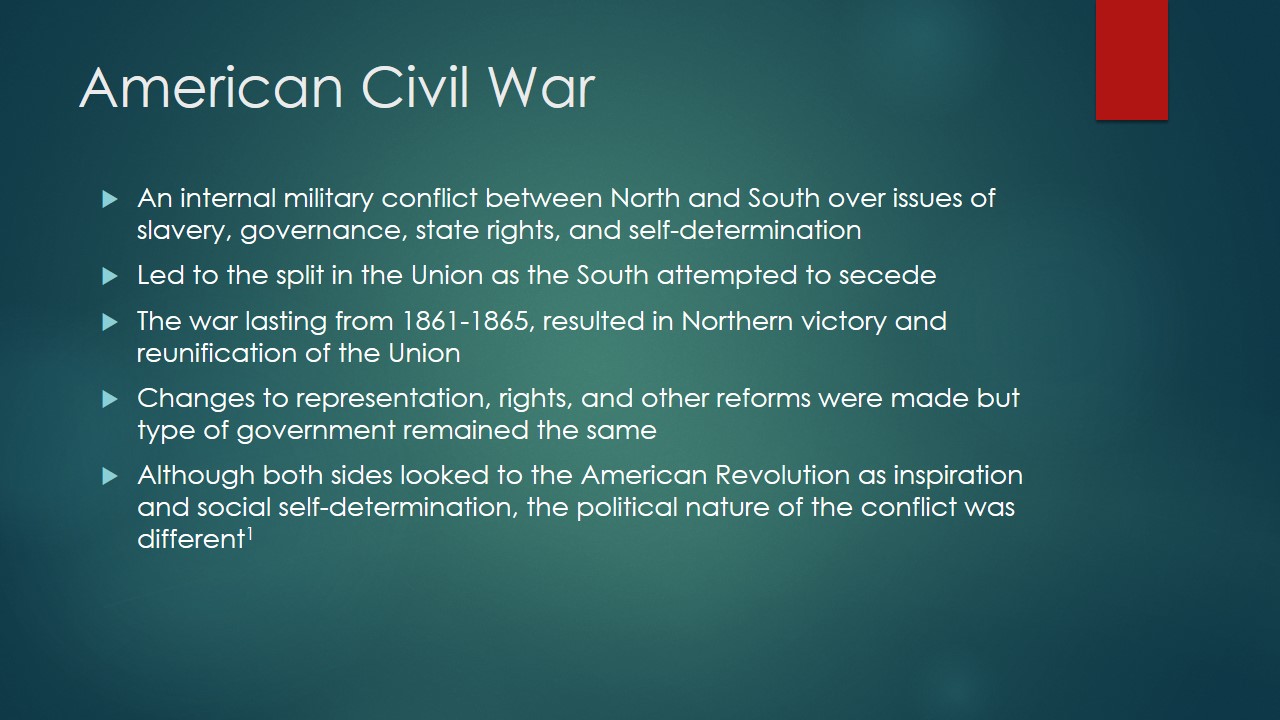
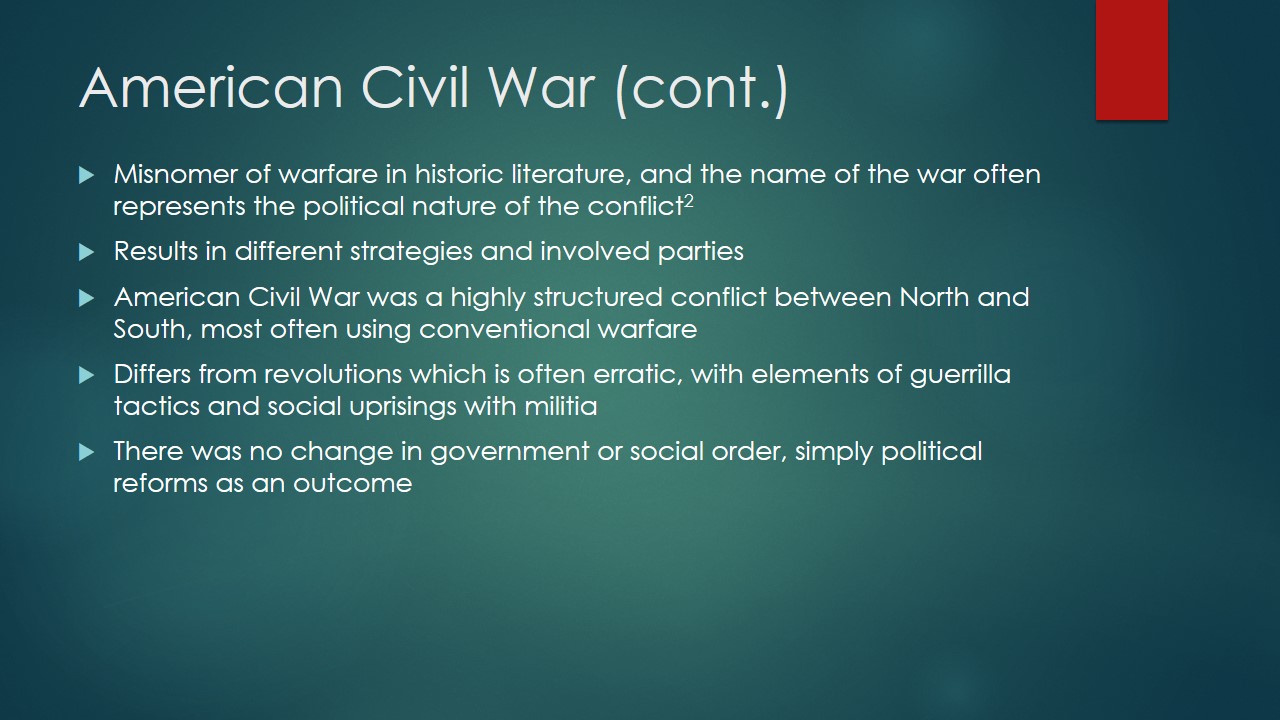
Fiji Coups
- A series of coups which saw military rise to power.
- First military not actively involved, serving as guardians to ethnic elite.
- Eventually becoming principal instrument of controlling key infrastructure.
- Reducing power of Fijian elite and institutions such as the Methodist church, dismantling core bases of the previous politics.
- Shift from ethnic politics to indigenous factions and economic organizations.
- While some changes in governance and society occur, there are no fundamental changes.
- Minor political shifts and instability in the electoral and governance processes.
- Revolutionary tendencies exist, but there is no profound opposition that is seeking fundamental change.
- The coups are politically and ethnically motivated, creating changes at the top, but having little impact on society.
- Direct military involvement in the coup suggests simply a transfer of power.
Fiji gained a reputation as coup-prone state experiencing a series of coups in 1987, 2000, and finally in 2006 led by the military. The complexities of the island’s politics are based in ethnic groups, religion, and some economic contexts such as sugar cane farming. These coups show an inherent instability in society and a classic overtake of government rule by the military. All these factors suggest weak legitimacy, instability of post-coup societies, and reversal to civilian rule until the latest military dictatorship.
The Fiji coups in their nature are not revolutionary as they do not present the powerful overthrow of government with a fundamental status quo change not only to governance but to society and ideology. Evidence demonstrates it is simply a shit of power, often with weak legitimacy and support, resulting in continuous reversals and subsequent coups. These are minor political shits that lack long-term stability.
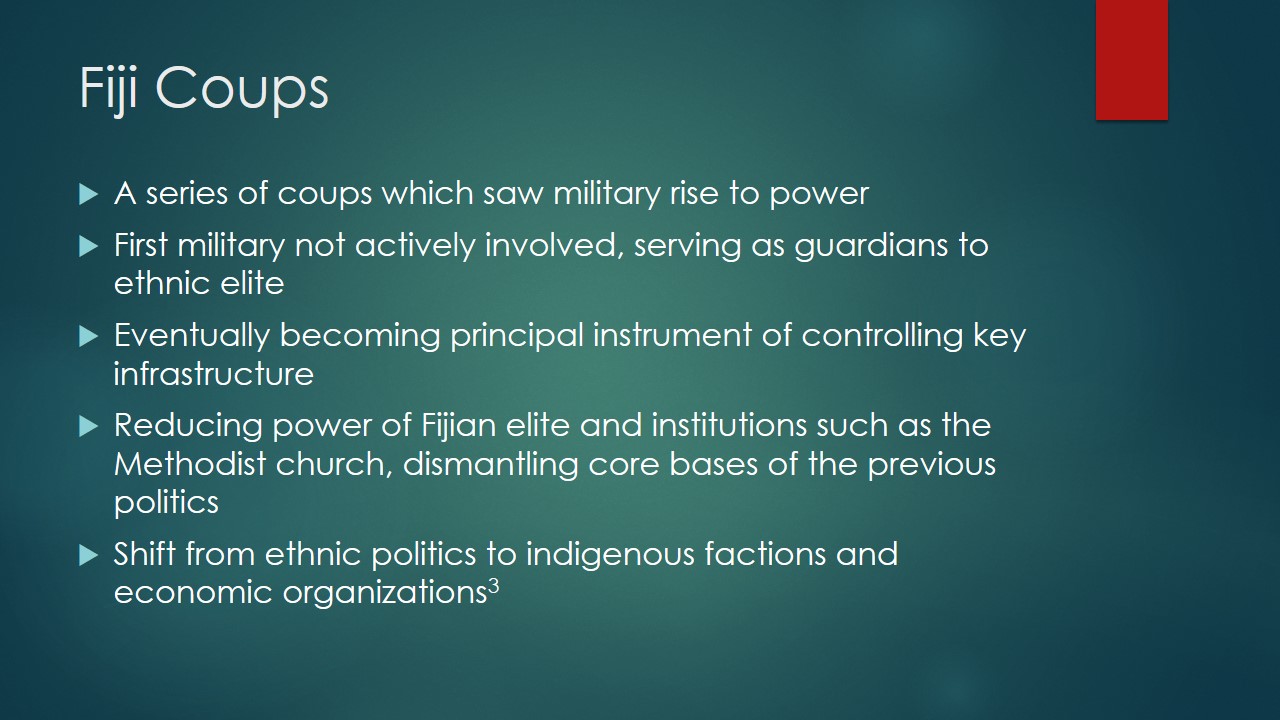
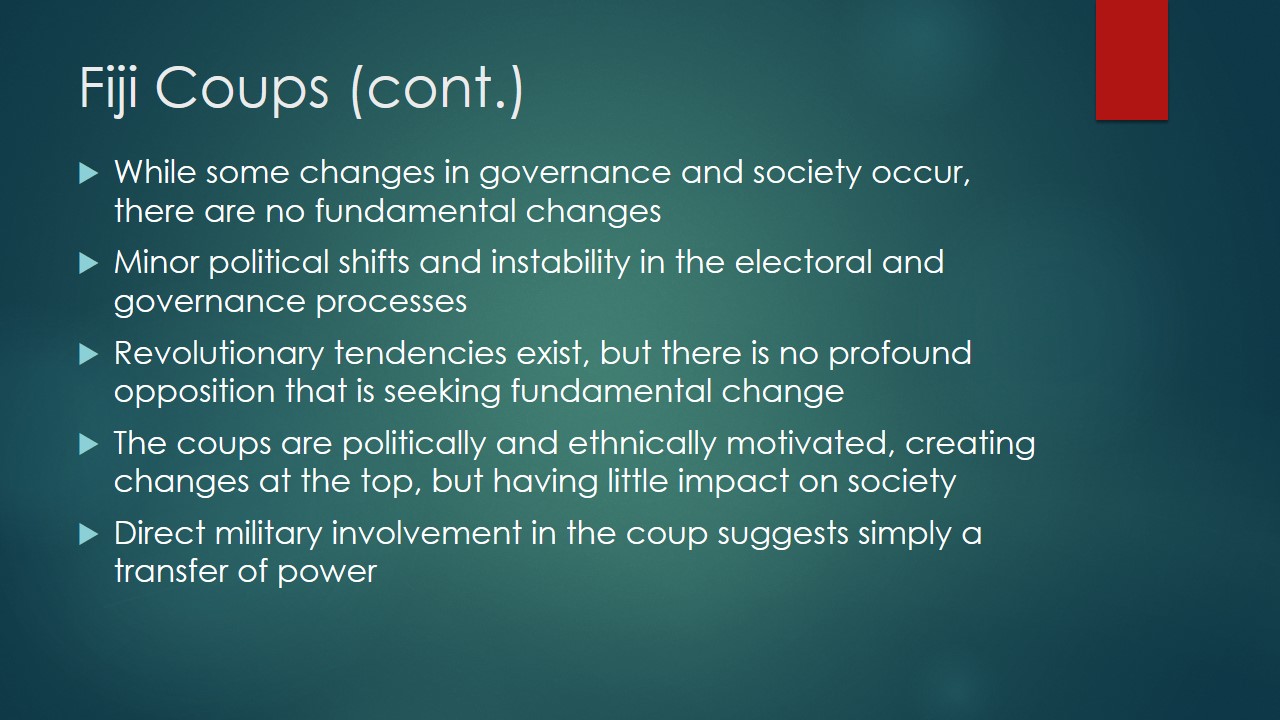
Differences from Revolutions
- A civil war is an open conflict of two internal parties for political control and power structure.
- No forcible overthrow of government or social order common in revolutions.
- The fact that there is no new system or status quo differentiates it.
- American Civil War was a conflict between two internal ideologies of already existing government entities (Southern v. Northern states).
- Prolonged military conflict uncommon for revolution.
- Coup characterized by rapid overthrow of top levels of government.
- Seizing control of key areas such as military and media.
- Insurgency meant to disrupt status quo through actions such guerrilla warfare.
- Both these characterize Fiji where rapid changes in government occurred, usually due to military intervention.
- Lacks the societal participation and long-term fundamental changes of revolutions.
Historically, civil war and revolutions are intertwined with one following the other. However, there are substantial differences. While violence may occur during a revolution, it is an inherent overthrow of the social order, not a military conflict. A civil war is a defined war between two organized groups in a same country, as occurred during the American Civil War. After the war, there was the same national government and governing process in place.
A coup can be considered as the initial stage of overthrowing the government. It is a rapid process during which the initial shock and potentially violence occurs. However, it differs from a revolution as a revolution can begin with a coup, but not all coups lead to a revolution since that requires fundamental changes in governance and society. In the example of Fiji, it was a series of coups led by military political infighting, and simply represented another shift in leadership without vital fundamental changes required for a revolution.
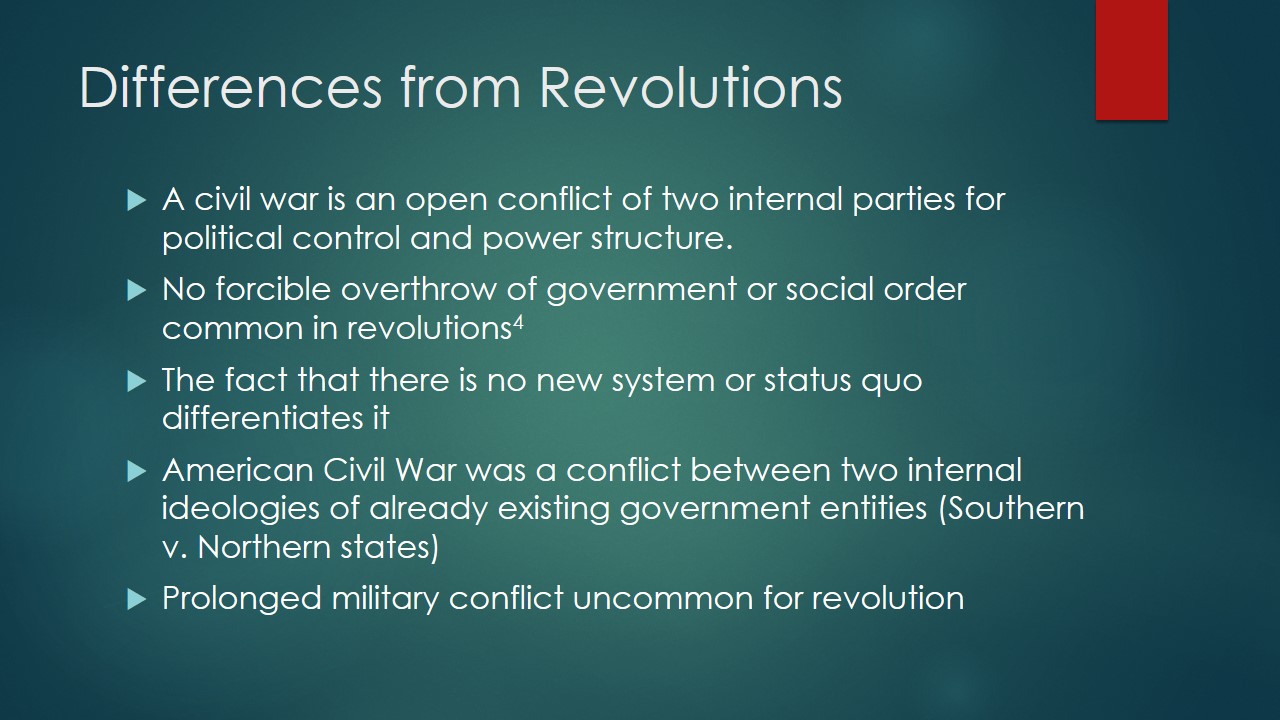

Bibliography
Armitage, David. “‘Civil War and Revolution.” Agora 44, no. 2 (2009): 18-22. Web.
Fraenkel, Joe. “The Origins Of Military Autonomy in Fiji: A Tale Of Three Coups.” Australian Journal of International Affairs 67, no.3 (2013): 327-341.
Gallagher, Gary W. “Revolutionary Ties to Civil Strife.” Civil War Times 52, no. 2 (2013): 18-20.
Goldstone, Jack A. Revolutions: Theoretical, Comparative, and Historical Studies. Belmont: Wadsworth, 2008.
Lockyer, Adam. “The Dynamics of Warfare in Civil War.” Civil Wars 12, no. ½ (2010): 91-116.